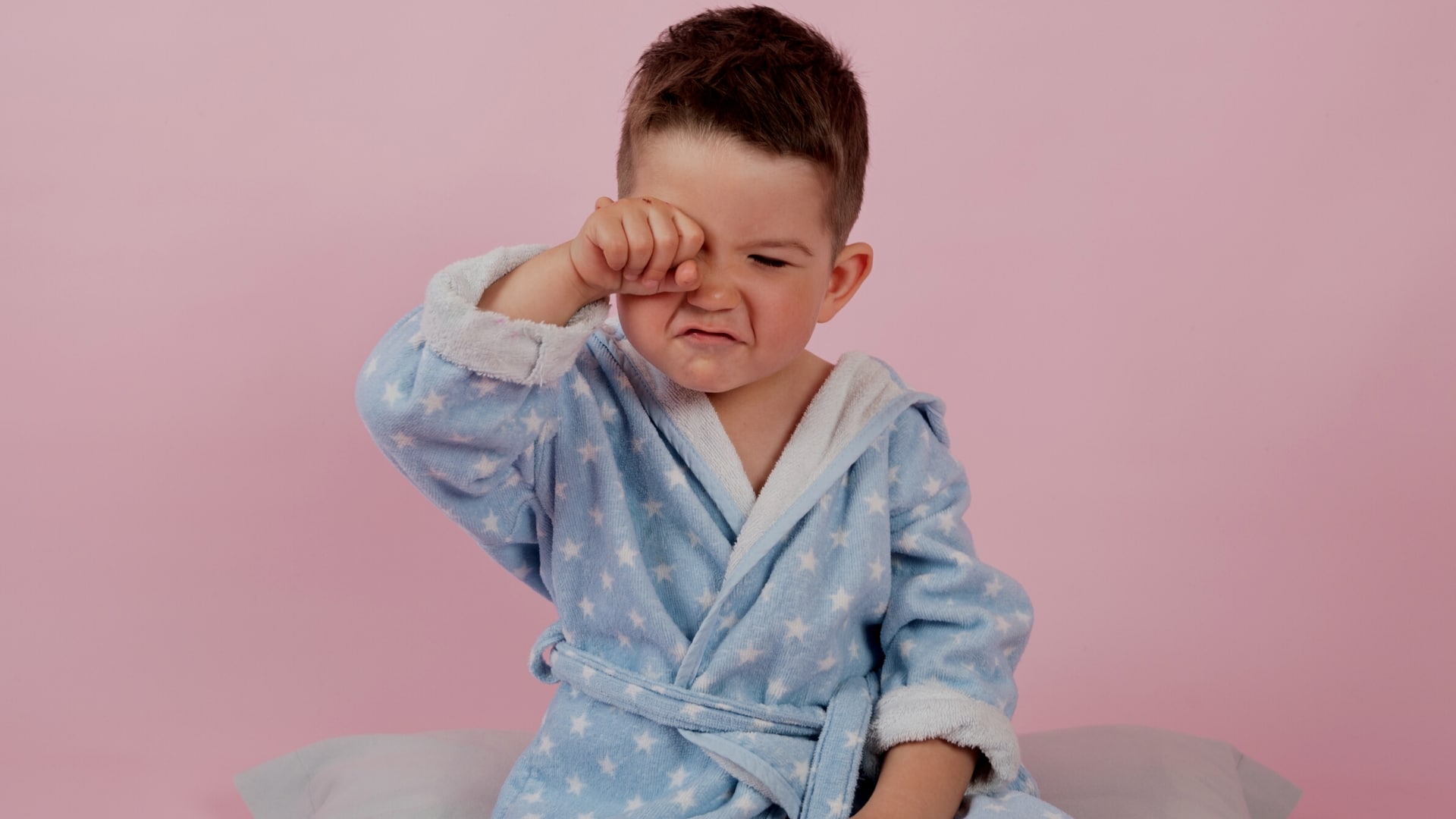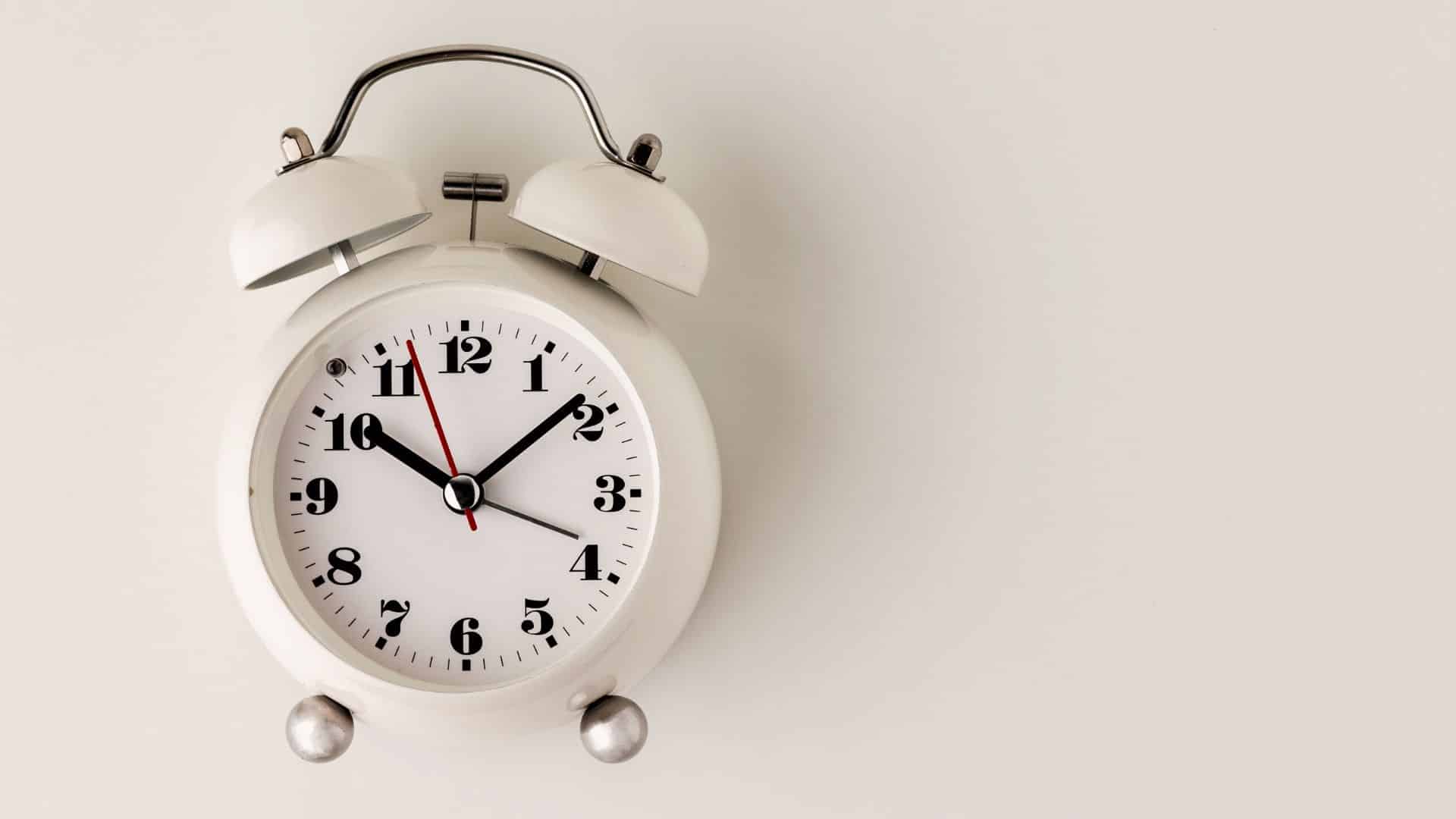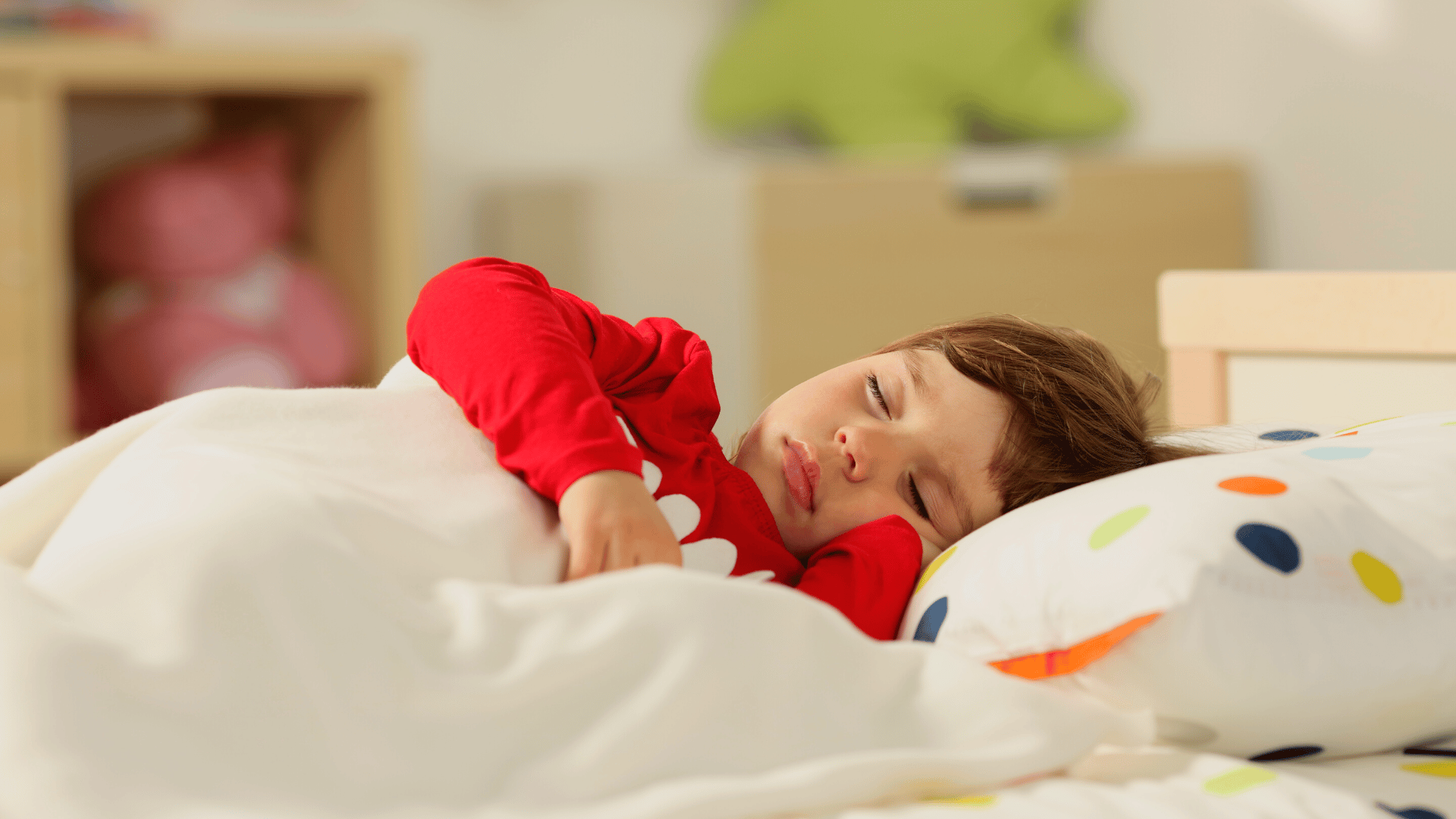While opinions on using pacifiers have been divided over the years, in my experience, letting baby sleep with a pacifier can provide comfort and help soothe your baby to sleep.
In today’s article, I will share over 40 years of childcare experience, explaining everything you need to know about pacifiers and baby sleep so you can make an informed decision for your little one.
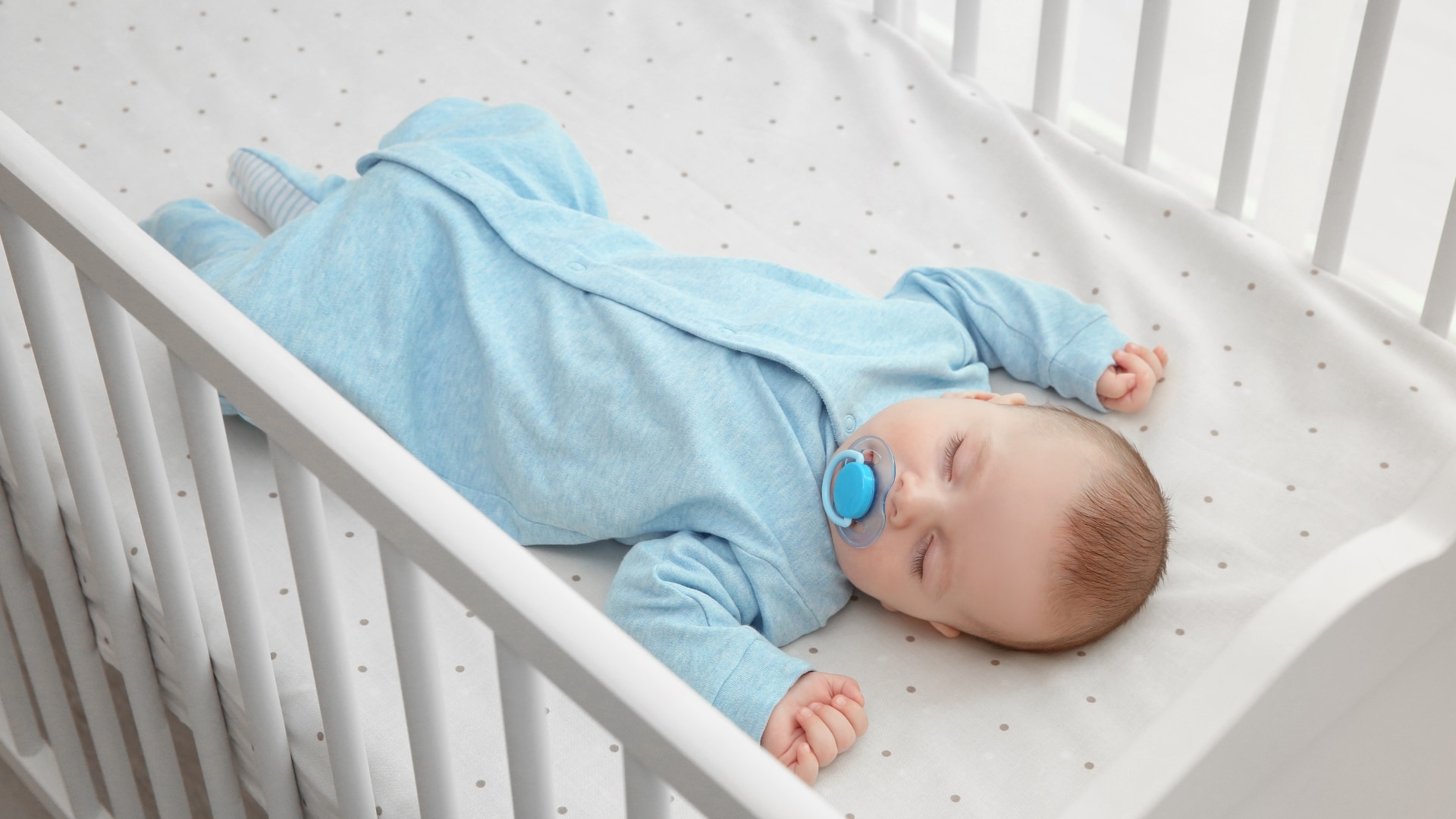
Table of Contents
Understanding Baby Sleep With Pacifier
Pacifiers are a common tool that many parents rely on for their calming effects with some studies suggesting that soothing with a pacifier aid in reducing the risk of Sudden Infant Death Syndrome (SIDS).
However, you should consider when introducing a pacifier, its impact on breastfeeding and nipple confusion ie: using pacifiers too soon can limit effective breast sucking and may contribute to incorrect latch.
I would advise that you wait until breastfeeding is well-established before introducing a pacifier. This usually takes about 3-4 weeks.
By doing this you will help prevent confusion for the newborn as the sucking mechanism differs between the two.
Safe Pacifier Use Guidelines
As with everything we use for our babies It is essential to ensure the pacifier you are using is safe. Things to take into consideration when choosing a pacifier are:
- It should be of the right size for your baby’s age to minimize choking hazards.
- It should be a one-piece model with air holes in the shield for added safety.
- Avoid attachments such as strings or toys that can pose a safety risk.
- Keep the pacifier clean and replace it regularly.
- Never attach the pacifier to your baby’s clothing
- Ensure your pacifier grows with your baby and change it accordingly
- Never dip the pacifier in sweet foods to entice your baby to suck
- Ensure there are no parts that can detach and become a choking hazard.
I would always opt for orthodontic pacifiers which are specifically designed for baby’s soft palette.
These cute dishwasher-safe orthodontic pacifiers have a teat that is designed to allow for a natural sucking motion, reducing pressure on the jaw and teeth, and preventing teeth misalignment! Their heart-shaped shield also fits perfectly under baby’s nose for easy breathing making them the perfect pacifier for your baby!
NOTE: You do not need to remove a pacifier once your little one has fallen asleep… and you do not need to re-insert the pacifier if it falls out while they’re sleeping either. Instead, wait until they wake up before putting the pacifier back in.
When Can A Newborn Sleep With A Pacifier?
You can safely introduce a pacifier to your newborn for sleep once breastfeeding is well-established at around 3-4 weeks of age.
The American Academy of Pediatrics (AAP) supports using a pacifier at naptime and bedtime after this time too. This recommendation aligns with their safe sleep guidelines to help reduce the risk of Sudden Infant Death Syndrome (SIDS).
However, not all babies like a pacifier, and the AAP emphasizes that you should never force a pacifier on your baby.
My son for one hated them and ended up being a thumb sucker instead.
If your newborn appears disinterested or refuses the pacifier, it’s best to try again at a later date.
Remember, while pacifiers can be part of your infant’s sleep routine, they are not mandatory, and each baby’s needs and preferences will vary.
NOTE: A pacifier should never be used to make your baby go longer between feeds. If they are hungry you should always feed them.
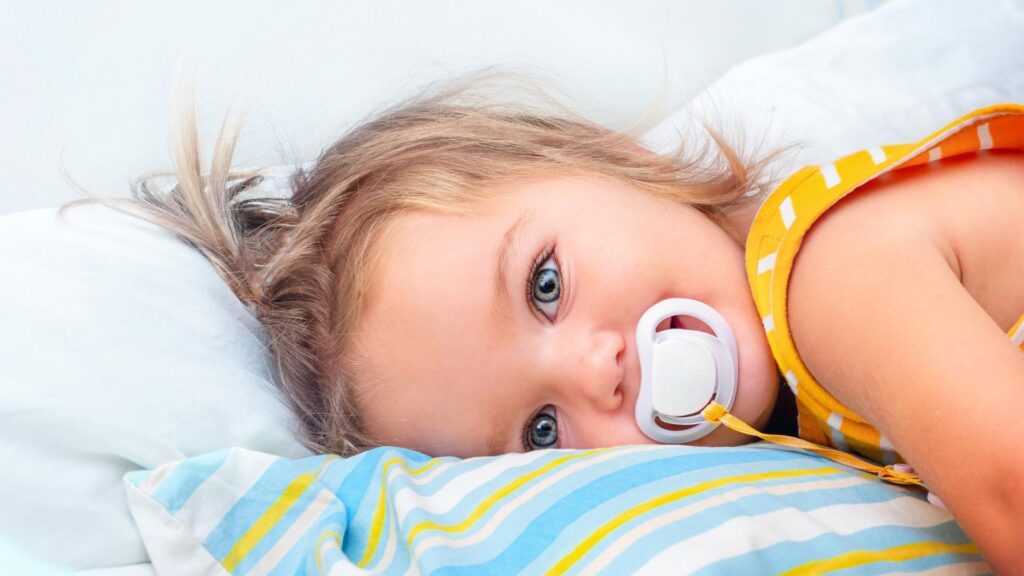
Benefits Of Sleeping With A Pacifier
For babies that take to a pacifier, there are many benefits when it comes to sleep:
- Pacifiers soothe baby’s natural sucking reflex. Newborns have an innate urge to suck, which is crucial for feeding. A pacifier can satisfy this reflex without over-relying on breastfeeding or bottle-feeding. This means that they can offer comfort even when they’re not hungry.
- Using a pacifier may aid sleep initiation. Non-nutritive sucking, which pacifiers provide, is a well-known method to help infants self-soothe. This can make falling asleep easier for your baby, potentially granting you more rest too.
- Pacifiers potentially reduce the risk of SIDS. Several studies suggest that pacifiers during naps and nighttime may lower the risk of sudden infant death syndrome (SIDS). The exact reason isn’t clear, but the benefits are significant enough to consider its use.
- They can also offer comfort when your baby is distressed. A pacifier can lend a familiar sense of relief in times of discomfort, whether from minor pains or the stress of new environments. It acts as a consistent source of comfort, helping calm your baby.
- Pacifiers are relatively easy to wean off of. Compared to thumb sucking, weaning baby off a pacifier is a lot easier to do. By gradually reducing the amount of time baby has the pacifier, followed by limiting when baby can have the pacifier throughout the day, you can break the association with a pacifier quickly and efficiently.
NOTE: While there are certain benefits to using a pacifier, they can sometimes be associated with an increased risk of middle ear infections. However, this risk is mainly present after six months of age.
What To Do When Baby’s Pacifier Falls Out
When your baby is very young, they will not able to put their pacifier back in when it falls out. This will mean that you will have to do it for them.
However, you should only replace the pacifier if your baby wakes up, finds that it is no longer there, and squirms or cries – wanting the pacifier back. Fortunately, as baby grows they will put the pacifier back in themselves when it falls out.
Should I Remove The Pacifier When Baby Is Sleeping?
As long as the pacifier is clean, well-maintained, and free from damage, there’s no need to remove baby’s pacifier when they’re sleeping.
By the same token, if the pacifier falls out mid-sleep and your baby doesn’t wake up, you don’t have to reinsert it.
Looking to get your little one to sleep quickly and effortlessly? Check out my Bedtime and Nap Cheat Sheet and master the art of making daytime naps and bedtimes as seamless as possible.
A bedtime & nap cheat sheet so good your little one will ask you to put them to bed...
Laura Williams "This is a life saver! I'm so glad I downloaded your bedtime & nap cheat sheet. My little one actually asked me to put him to bed last night! Unbelievable! Thank you so much!"
Click Here For The FREE Cheat Sheet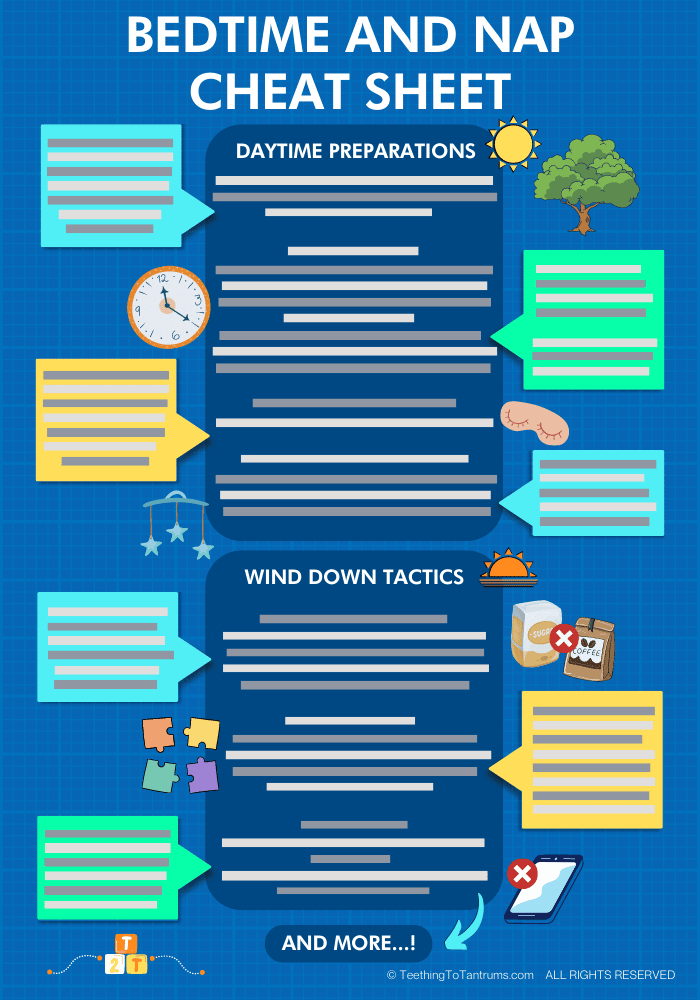
How To Prevent Your Baby From Becoming Too Dependent on Their Pacifier
It can be very easy to fall into the trap of opting for the pacifier every time your baby cries, however, this can quickly turn into an all-day dependency if not managed properly.
For very young babies using a pacifier to help with uncomfortable gas or colic is a great idea and also to help them settle to sleep more quickly.
However, as they grow up, learning to self-soothe without the pacifier is the best route to go and this means you need to teach them to calm down during the day without one.
To do this, restrict pacifier use to nap times and bedtimes only.
Or to occasions when your baby is overtired and struggling to settle down.
Another way to help this is, if the pacifier does fall out, give your baby some time to settle themselves before stepping in and putting it back in. In this way, they are not relying solely on the pacifier to soothe themselves.
If your baby does become overly fussy, try soothing them by gently patting or stroking instead of immediately trying the pacifier.
If these methods don’t work and the pacifier seems necessary, give it back, but slightly delay this over successive nights.
To learn more about helping baby learn to self-settle, check out this post: How to Self Soothe Baby: The Ultimate Guide To Peace & Calm
TOP TIP: In the early months, I use a combination of the pacifier and manual soothing techniques such as patting and stroking so that when we want baby to become less reliant on the pacifier they are already familiar with other settling techniques.
Risks Of Sleeping With A Pacifier
As with everything, there are always pros and cons, and using pacifiers is no exception. However, by gaining all the facts, you can weigh what works best for you and your baby and make an informed decision about letting your baby sleep with a pacifier.
- Pacifiers Can Increase The Risk Of Middle Ear Infections. While pacifiers can be soothing, they may lead to more ear infections. Your ear and throat are connected by a passage called the Eustachian tube. Using a pacifier for extended periods can change the pressure in the Eustachian tube, resulting in infections.
- Potential Dental Problems Over Time. Regular use of a pacifier can affect the development of your baby’s teeth. The pressure put on the gums and developing teeth can lead to misalignment. Try to minimize pacifier use as your child grows to prevent potential dental issues. However, this issue can also be said of thumb and finger sucking…
- Dependency On The Pacifier. Relying on a pacifier for sleep can create dependency. If your baby becomes overly dependent on one to fall asleep, they might have trouble sleeping without it. This dependency could make bedtime more difficult if the pacifier is lost or forgotten. This dependency will also be determined by how long they have been using the pacifier and whether they use it all the time rather than just for sleep.
- Delayed Speech. Overuse of the pacifier during waking hours can prevent your baby from babbling and developing early speech. This is another good reason for limiting pacifier use to sleep times only.
- Tummy Infections. If not cared for and cleaned properly, pacifiers can be a haven for bacteria that cause tummy infections. Always make sure your pacifiers are cleaned thoroughly at least once a day.
- Choking Hazard. Always choose one-piece pacifiers and inspect them regularly for wear and tear. It is important to replace a pacifier immediately if you notice any damage to prevent a potential choking hazard.
- Possibility of Nipple Confusion. In some cases, a pacifier can cause nipple confusion in newborns. This is where a baby might have difficulty latching onto the breast because they’ve adapted to the artificial nipple. That is why it is essential to establish breastfeeding before introducing a pacifier.
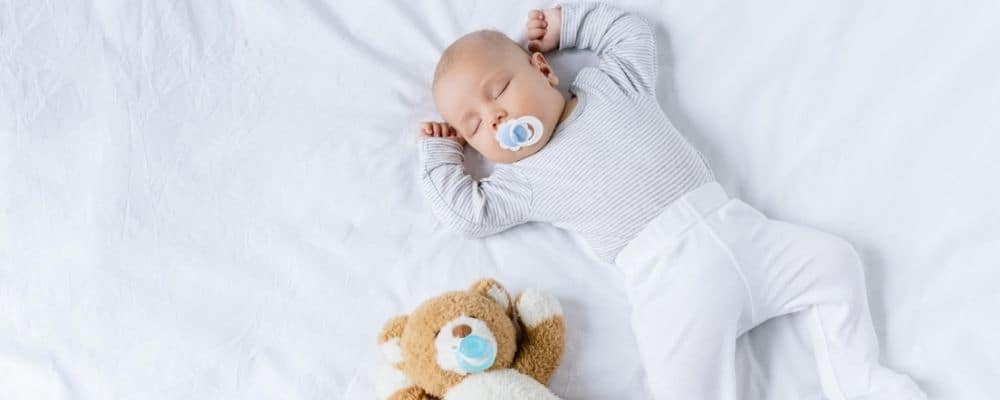
How To Get Baby To Sleep Without Pacifier
Whether you are looking to find an alternative to a pacifier to settle your baby to sleep or have been using one and wish to reduce the use… the following list will help your little one learn to self-soothe without a pacifier.
While some of these techniques may not have instant results, in the long run, they will establish healthy sleep signals and soothing techniques that will benefit your little one’s sleep for years to come.
- Establish a calming bedtime routine. Creating a predictable bedtime routine will signal to your baby that it’s time to sleep without needing a pacifier. This might include a warm bath, a gentle massage, or reading a book together. Consistency in your nighttime activities will help your baby feel secure and more prepared to drift off to sleep.
- Introduce a comfort object or lovey. Once your child is a year old you can offer a soft toy or blanket to replace the pacifier. Choose an item that is safe for your baby and does not pose a choking hazard. A comfort object can become a source of security, helping your little one to relax and fall asleep.
- Gradually reduce pacifier use. If you have been using a pacifier start by limiting the pacifier to nap and bedtime only, then slowly decrease its use over time. For instance, you might decide to stop offering the pacifier during naps. Once your baby is adjusted to this, you can work on eliminating it during nighttime sleep as well.
- Use alternative soothing methods. Gentle rocking, cuddling, or softly singing can also help soothe your baby to sleep. Affectionate touch and calming sounds are effective ways to reassure and relax your baby, potentially making the pacifier unnecessary for sleep.
- Use a white noise machine. Using a white noise machine can be very soothing for your little one and provide added comfort when settling them to sleep.
- Be patient and consistent. Understand that weaning your baby off the pacifier is a process that takes time. Your baby may resist change initially, and it’s important to be patient. Consistency in your approach will eventually help your child adapt to falling asleep without a pacifier.
NOTE: The AAP suggests it’s best to wean your baby off the pacifier by the age of one. This is primarily to prevent possible dental issues that could arise from prolonged use.
When To Get Rid Of Baby’s Pacifier
Weaning your baby off the pacifier between 6 and 12 months of age is the ideal time to break the habit because around this time, babies are less likely to develop an emotional attachment to the pacifier, and giving it up will be easier than if you leave it until they are much older.
The earlier you start to wean, the easier the detachment is.
Continuing pacifier use beyond 2 to 3 years can lead to dental problems.
To help with the transition, limit pacifier use during the day first, offering it only during naps and bedtime.
As always consistency is key, as habits can be tough to break. If your baby struggles, consult your pediatrician or a dentist for personalized advice.
Remember that each baby is different. Some might wean off naturally, while others may need a bit of encouragement. It is best to steer away from abrupt changes: gradual weaning is typically the most effective approach.
When To Talk To A Pediatrician
When introducing a pacifier to your newborn, it is always advisable to chat with your pediatrician first as they will consider your baby’s bottle-fed or breastfed feeding habits and advise accordingly.
If you’re breastfeeding, your doctor will probably suggest waiting until it’s well-established, about three weeks, before starting pacifier use. This ensures it doesn’t interfere with the breastfeeding process.
If your baby starts to develop frequent ear infections or other health concerns, the pacifier might be a contributing factor in which case your doctor may suggest you stop using one.
Pacifiers vary in size and shape, and they should grow with your baby. If you’re unsure about what’s appropriate for your infant’s age, your pediatrician can help you choose.
A pediatrician will also provide insight into non-nutritive sucking and its effects on your infant’s oral health.
TOP TIP: If you think your newborn’s pacifier use seems to be impacting their nutrient intake or sleep quality, it’s time for a pediatric evaluation.
Frequently Asked Questions About Babies Sleeping With Pacifiers
This section addresses some of the common queries around pacifiers and baby sleep. It offers guidance based on current understandings and recommendations.
Q: Are pacifiers and dummies different?
A: Pacifiers and dummies refer to the same baby product in different regions. ‘Pacifier’ is commonly used in the United States, while ‘dummy’ is the usual term in the United Kingdom and some other Commonwealth countries. They are both designed to satisfy an infant’s natural sucking reflex.
Q: How does pacifier use affect sleep training for infants?
A: Using a pacifier can be part of an effective sleep training strategy. It can provide comfort and help babies fall asleep on their own. However, you should also prepare for times when the pacifier is not available. Integrating other self-soothing methods into sleep training can help your baby rest without always needing a pacifier.
Read this post to learn more: Sleep Training With A Pacifier
Q: How can I prevent my baby from waking up when the pacifier falls out?
A: There is no way to prevent a baby from waking when their pacifier falls out, however, when they are old enough, consider teaching your baby to replace their pacifier independently. This can be done by placing several pacifiers within their reach in the crib. With time and practice, your baby will learn to locate and insert the pacifier on their own.
Q: Can a baby sleep with a pacifier all night?
A: Yes, a baby can sleep with a pacifier throughout the night. It may even reduce the risk of sudden infant death syndrome (SIDS). However, make sure the pacifier is of appropriate size for your baby’s age to prevent choking hazards. Always check for wear and tear to ensure your baby’s safety.
Q: What are the recommendations for pacifier use in terms of daily duration?
A: Health experts recommend offering a pacifier at nap time and bedtime as part of the regular sleep routine. The prolonged use of a pacifier throughout the day isn’t necessary and should be avoided, especially as your baby grows. This helps to strike a balance between the benefits and preventing potential dependencies.
Need More Parenting Help?
- Download our FREE Bedtime & Nap Sleep Cheat Sheet. It’s a free, easy-to-use and proven formula designed for parents of 0-5 year olds to master the art of consistently undisturbed and restful sleep without the yelling, nagging or exhausting long-winded evenings.
- Check out our Parenting Toolbox. You’ll get access to expertly-chosen products that you can guarantee are the best for your little one and your wallet.
- Are you looking for personalized guidance to navigate the challenges of parenting? I offer 1-on-1 consultations to bring you tailored strategies and actionable advice to help support your child's growth and well-being with confidence.

A bedtime & nap cheat sheet so good your little one will ask you to put them to bed...
Laura Williams "This is a life saver! I'm so glad I downloaded your bedtime & nap cheat sheet. My little one actually asked me to put him to bed last night! Unbelievable! Thank you so much!"
Click Here For The FREE Cheat Sheet

